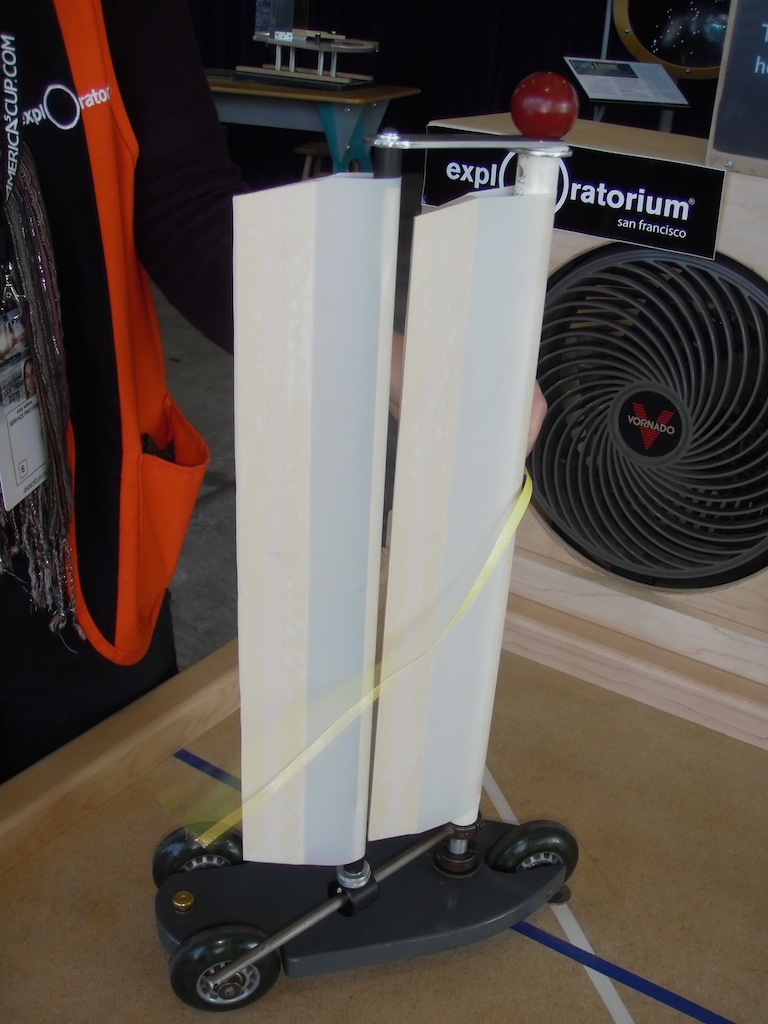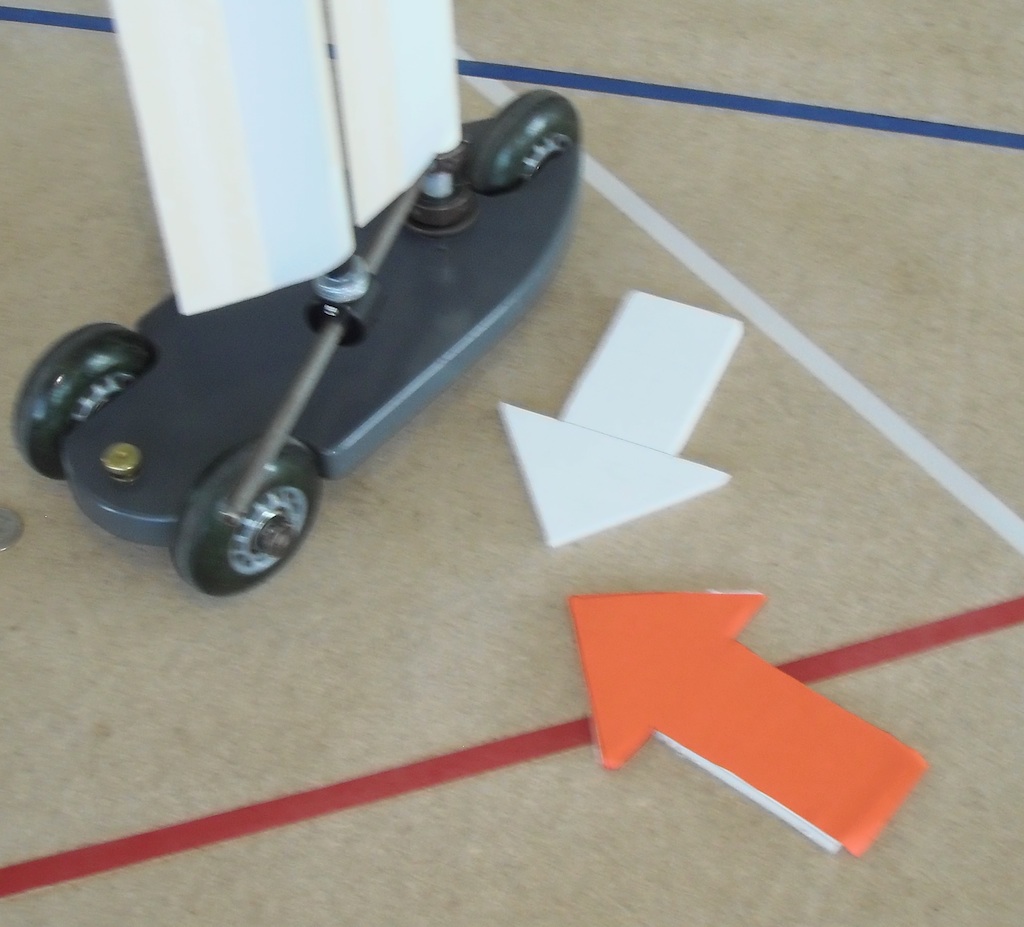
A yellow ribbon telltale shows the flow of air over the downwind side of a wingsail.
Sailing into the wind
Introduction
Sailboats can sail into the wind, and they can sail faster than the wind.
Material
A wing shape
A fan
colored yarn
or ribbon (25 cm or 1 foot long)
To Do and Notice
Hold the wing so that the air from the fan blows over and under the wing.
Hold the yarn or ribbon near the wing and follow the flow of the air.
Notice that you can orient the wing so that the air flows over the curved top of the wing and flows down behind the wing.
Wings throw air down. The reaction force of the air on the wing forces the wing up and provides lift. Lift is always accompanied by drag,A force along the wing that opposes the motion of the wing. (If you had a means of measuring pressure you would find that the pressure on the top surface of the wing is lower than atmospheric pressure.)
You can do the same experiment with a wingsail.

A yellow ribbon telltale shows the flow of air over the downwind side of a wingsail.
What's Going On?
Consider a square rigger sailboat with the square sail set perpendicular to the wind and the hull. As long as the wind hits the sail it generates a force on the sail which will drive the boat forward down wind. However as the boat speed approaches the speed of the wind the impact of the wind on the sail becomes less and less, so that the boat cannot go faster than the wind , straight downwind.
You have probably seen sailboats with triangular sails and maybe even modern sailboats like the 34th Americas cup sailboats with wing sails. These sails behave like airplane wings.
Airplane wings take a smaller thrust from an engine to create an airflow over the wing by moving the wing through the air.
The wing throws the air downward the air exerts a reaction force on the wing creating a much larger lift than could be created by purely using the engine to create lift without a wing.
Often scientists view the airflow from the point of view that the wing is stationary and the air flows over the wing. We'll do this when we look at sails.
The keel or daggerboard on a sailboat prevents the sailboat from moving sideways. A helmsman can then orient the sailboat and sail so that wind blows over the sail.
Air flows over the sail surfaces and is deflected as it flows. The deflection requires that the sailboat exert a force on the wind, the wind in turn exerts a reaction force on the boat.

The sail deflects the wind, white arrows.

The red force pushes on the wind and changes its direction.

The reaction force of the wind on the boat creates lift.
We standardly break the reaction force into two parts, the lift and the drag. The lift is perpendicular to the wing or sail and the drag is parallel to the sail and directed toward the rear of the sail.
A component of the lift is parallel to the keel of the boat and drives the boat forward.
A component of the drag is parallel to the keel and slows the forward motion of the boat.
Assume the boat is steered so that the wind approaches from the side. The boat can move forward in the side wind. As the boat moves forward the wind is seen to approach from the side and the front. The faster the boat goes the more the wind comes from in front. However, the sail can be set to provide a forward force from a component of the lift force even when moving in a crosswind faster than the wind.
As the boat heads perhaps 45 degrees to the right of the direction the wind is blowing the air is deflected by the sail to provide lift, a component of the lift drives the sail forward.
A sailboat does not sail straight into the wind, but it can go into the wind on the average by tacking left (port) and then right (starboard).
Etc
More air is deflected by the upper surface of a wing and by the outer surface of a sail than by the lower surface of the wing and the inner surface of the sail.
|
Scientific Explorations with Paul Doherty |
|
16 November 2011 |